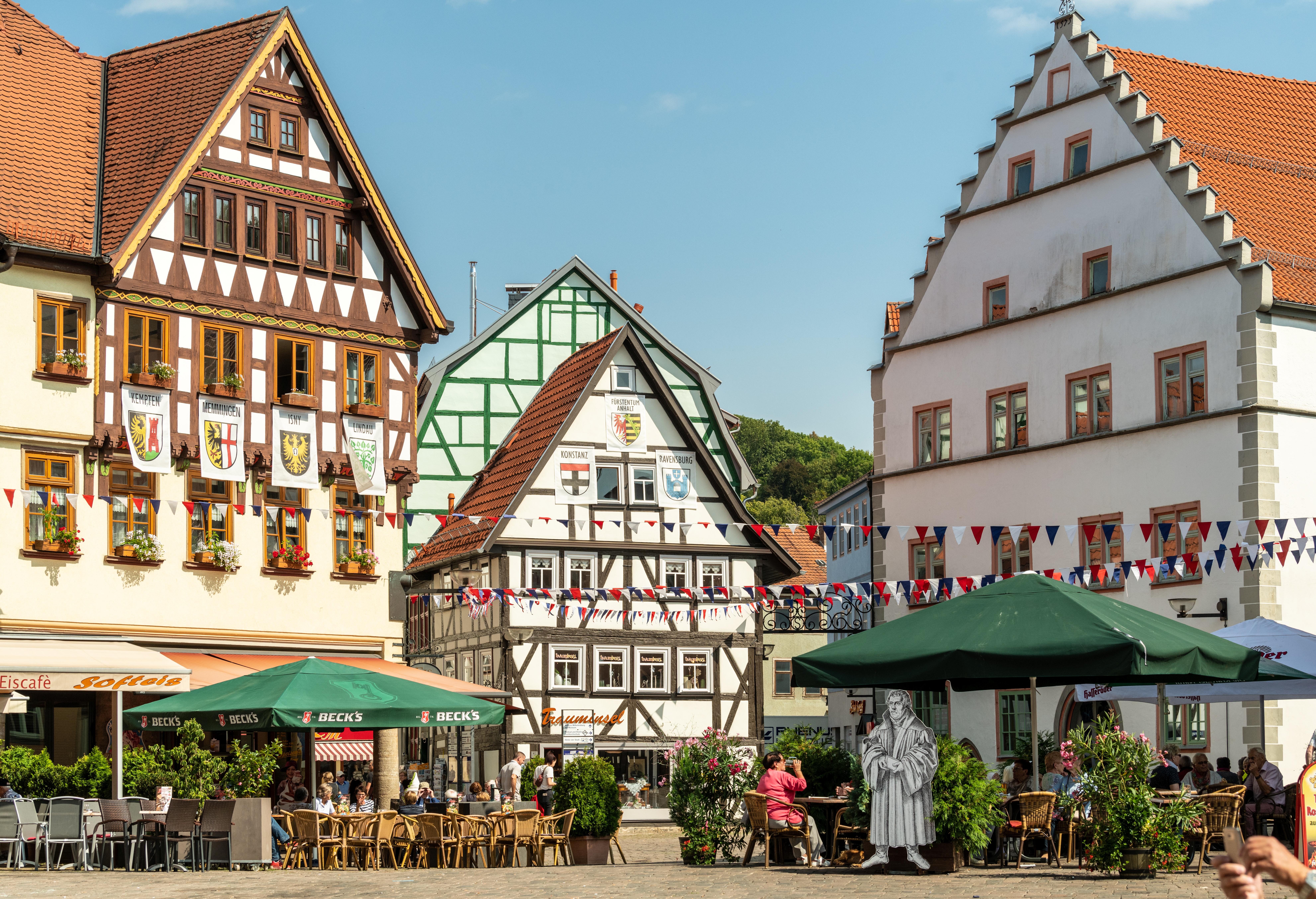
Schmalkalden
Half-timbered houses and a union of Protestant princes
A convention of princes with consequences
After the Protestant German princes had already concluded a covenant in Schmalkalden in 1530/31, they finalised the church split at the Schmalkalden Diet of 1537. The convention of princes went down in history as particularly glamorous. More than 1,000 participants attended, including the 16 Protestant princes, six counts, envoys from the Emperor, the Pope, the French and Danish kings, representatives from 28 Imperial and Hanseatic cities as well as 42 Protestant theologians. Including Martin Luther.
Martin Luther's confessions of faith subsequently went down in history as the Schmalkaldic Articles. He himself once said about them: "These are the articles on which I must insist and will insist until my death, God willing. And I do not know how to change them nor to give in."
View of Schmalkalden with Wilhelmsburg Castle ©Alexander Michel, Thüringer Tourismus GmbH
Wilhelmsburg Castle
Wilhelmsburg Castle in Schmalkalden is a gem among Germany’s Renaissance castles. In addition to the former princely living quarters, the beautiful Renaissance garden and the unique view over the town, the exhibition on the Schmalkaldic League is a magnet for visitors. What sounds dry is actually very entertaining. Walk-through city scenes from the past and historical personalities, who come to life on large screens and describe their personal view of things, bring history to life in an entertaining way. It turns out that in the end, very human things led to the failure of the alliance, such as love and lust ...
TIP: VIBA NOUGATWELT
Header: ©Dominik Ketz, Regionalverbund Thüringer Wald e.V.









